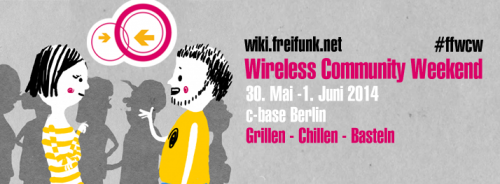This year, the Google Summer of Code and FreiFunk have given to Guifi.net and QMP communities the opportunity to develope a project in this event. This project is: BGP/Bird integration with OpenWRT and QMP.
A brief description of the project
Most of the community networks run dynamic routing protocols (OLSR, BMX6, BATMAN-ADV, etc.) with non-dynamic ones (BGP, OSPF, etc.). Guifi.net (BGP) and QMP (BMX6) are a scenario where this collision of metrics and routes happens.
Furthermore, these communities are using Quagga for the BGP routing, which is a complex and oversized tool for the type of nodes that will work with it. For these kind of nodes, Bird is a really lightweight BGP daemon that is still not well supported to be used easily by the community (it does not have an easy and graphical configuration system yet).
This project will contribute with:
1st Block: Adapting Bird to fit into QMP firmware. (1 month)
- Bird daemon improvements (3 weeks)
- Give to Bird integration with OpenWRT: Add support for UCI configuration. Thus, will ease the configuring process and become closer to non-expert users.
- Improve Bird UCI configuration adding LUCI support (web graphical interface). Adding a graphical user-friendly interface and the necessary tools to automate hardest processes of the configuration, non-expert community users could find this daemon as an easy to use routing tool.
- Adapt Bird daemon to QMP (1 week)
- Once working on OpenWRT and with an easy ‘to put on work’ configuration, add integration with the QMP firmware owing to replace Quagga’s routing functions in frontier nodes of the QMP network.
2n Block: Automate the translations of routes and metrics between a non-dynamic routing protocol and a dynamic one. (~2 months)
- Creation of a routes and metrics exchange system (7 weeks)
- Study and build an exchange system for metrics and routes between BGP (from Guifi.net) and BMX6 (from QMP).
- Test and debug this solution in the real scenario (Guifi.net-QMP)
3rd Block: Project basic feedback and documentation (1 week)
- Documentation, user support&feedback and results presentation.
About the author
I am Eloi Carbó, a Computer Science student specialized in Information Technology in the UPC of Barcelona. Currently I am working on my Final Degree dissertation: UPC CN-A testbed mesh network deployment, monitoring and validation. Using the Wibed Platform developed by the CONFINE Project [Link: https://wiki.confine-project.eu/wibed:start].
About the project collaborators
The project tutors are Roger Baig (fundació Guifi.net) and Axel Neumann (Freifunk and BMX6 support) and the special collaboration of Pau Escrich (fundació Guifi.net and QMP project).
